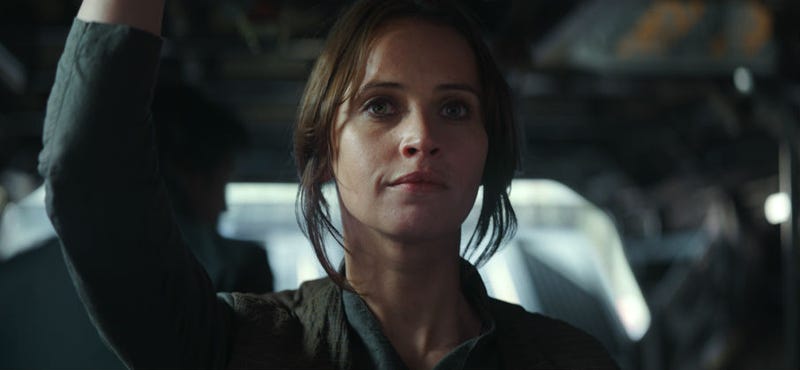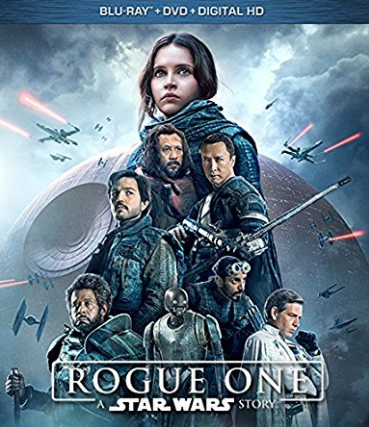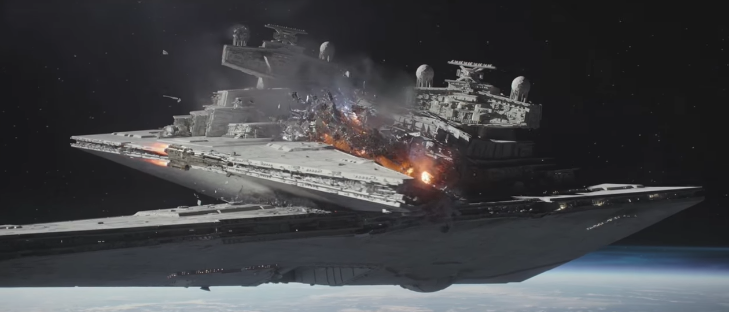Category Archives: Rogue One
How Rogue One’s First Writer Got the Job
Via i09.com:
It was a day long remembered: October 30, 2012. The day Disney announced it had bought Lucasfilm and would be releasing new Star Wars movies. Fans everywhere immediately began freaking out about the news, but one in particular saw it as an opportunity.
That person is Gary Whitta, who previously wrote The Book of Eli and After Earth before being annoucned as the first writer on the first Star Wars standalone film. “I literally went from reading the news story on my phone to calling my agent and saying ‘Oh my god you gotta throw my hat in the ring,’” Whitta told io9. “Now, I’m sure every writer in town was doing the same thing. I never seriously thought I’d get in that room.”
Get in the room he did. Whitta told us that he later was summoned to a secret, very general meeting at Lucasfilm. “There was no talk of Rogue One or Death Star plans or anything like that,” Whitta said. “Lucasfilm is a little like the CIA. They’re very, very secretive. So I had the meeting and thought, that’s it. I didn’t think anything was going to come out of it.”
That was, until, he got sent a document. In the document was John Knoll’s story pitch for what would become Rogue One, about the Rebels who stole the original Death Star plans. “I thought that was a great idea,” Whitta said. “And John is brilliant, but he’s not a screenwriter, so they needed a writer to come in and take what he started and flesh it out into a full story. Why they hired me, I still couldn’t tell you.”
He has one idea, though. It happened in the second meeting after he’d read Knoll’s document. “I told him, ‘This movie reminds me a bit of Zero Dark Thirty,’” Whitta said, citing the strong female characters, on the ground, in a war zone, on a crucially important mission. “The moment I said that I saw a bit of recognition in John. He nodded, and I thought ‘I said something right there.’”
Later, after being hired, Whitta saw the PowerPoint presentation Knoll created to pitch the idea to Lucasfilm president Kathleen Kennedy. “There was a ton of Zero Dark Thirty footage in there,” Whitta said. “So I did say the right thing. I made the right reference, and maybe that’s one of the reasons why they felt I had the same sensibility for what the film would be as john’s original vision was.”
Though Whitta wrote the first drafts of the script, he got a “story by” credit with Knoll in the final film, while Chris Weitz and Tony Gilroy got the screenwriting credit. This doesn’t bother him, though, because he explains that with a movie this size, the more talent they can throw at it, the better.
“I think of Rogue One like a relay race,” Whitta explains. “John ran the first leg. He handed the baton to me and I ran the second leg. Then as I started to get exhausted and run out of steam I handed the baton to Chris. Then Chris runs his leg and makes his contribution, which is a huge contribution as he created Chirrut, Baze, and Bodhi, and then he takes it to Tony who takes it over the finish line.”
“You’re grateful to work with talented people,” Whitta concluded. “Plus no one knows who did what. You just see the four names on the screen.”
And for Whitta that started with nothing but a timely telephone call.
Gareth Edwards Discusses Rogue One and Carrie Fisher
Via Telegraph.co.uk:
The original Star Wars was the film that made a young, impressionable Gareth Edwards want to make his own, growing up in Warwickshire before getting his start in the industry.
His debut Monsters (2010), made on a production budget of “way under” $500,000, catapulted him to attention, not least because he handled all 250 visual effects shots in his own bedroom. The Godzilla (2014) reboot then proved he could handle a budget several hundred times larger, and still fill a film with soul, excitement and melancholy.
That was a stepping stone to his current fame, as the director of Rogue One: A Star Wars Story, the first standalone “anthology” film to spring from a galaxy far, far away – it’s the film that joins the dots for fans between Episodes III and IV, while bringing a whole new cadre of heroes into the universe. On the eve of its home-entertainment release, we sat down with Edwards, laid-back and well-rested by now, to talk about his early inspiration, the technical challenges of the story, and the substantial reshoots needed to get it right.
On growing up as a Star Wars fan
I didn’t have the very most Star Wars figures out of my friends – I was probably in the middle, or towards the high end. I had the Millennium Falcon and an AT-AT, things like that, and an X-Wing. But this friend of mine that lived down the road had everything. So I’d always go down the road to his house, and play Star Wars with him. The ideal thing was to do Return of the Jedi, because it would really work as Endor in your parents’ back garden. But then, as soon as you’d set them up, it was like, now what? Because they don’t really move, they can’t fire at each other.
I remember drawing a lot. From the comics I would try and copy, like, Admiral Ackbar. For years it felt like you were wasting your life. If you look at my textbooks as a kid, and go anywhere near the back, you’ll see X-Wings, a Death Star, the Millennium Falcon, R2D2, everywhere. And you’d get shouted out by the teacher if they caught you. And then, about 30 years later, you’re at Lucasfilm trying to draw X-Wings and the Death Star and getting paid for it.
The geekiest fact about me is that when I was 30, for my 30th birthday, I went to Tunisia, and stayed the night in Luke Skywalker’s house, which is in the middle of the desert, in this, like, troglodyte hotel. And I took some blue dye with me, so I could have some blue milk, at the very table where Luke drank blue milk, and then I watched the sunset on the salt flats. That’s something I would never tell anybody, because I would be embarrassed about it. Now that I’ve got to do Star Wars, it’s a really nice story. But for a long time it was like, ‘Don’t bring up the Tunisia thing!’ People will think I’m really geeky and sad.
Click below to read the full article.
Rogue One: A Star Wars Story
Rogue One: A Star Wars Story “K-2SO – The Droid” Bonus Feature
Rogue One: A Star Wars Story “K-2SO’s Head”
Rogue One: A Star Wars Story “The Lovable K-2SO”
Rogue One: A Star Wars Story “Designing K-2SO”
John Knoll Interview About VFX Shots in Rogue One
Via Slashfilm.com:
A couple weeks ago, /Film had a chance to visit Industrial Light and Magic for a press event ahead of the home video release of Rogue One: A Star Wars Story. While there, executive producer and visual effects supervisor John Knoll gave us a keynote presentation showing off the hard work that went into the various visual effects in Rogue One, from the creation and destruction of Jedha to the seamless, impressive use of virtual sets. But we’ll have more on that later this week in honor of the movie’s arrival on Blu-ray and DVD.
Right now, we have an interview with Knoll where he told us how many visual effects shots were in Rogue One (including comparing the number to the rest of the Star Wars library), why recreating concept artist Ralph McQuarrie‘s designs for the Death Star with visual effects was so difficult, and much more about the visual effects of the movie.
How does it feel to come out of Industrial Light and Magic, working on previous Star Wars movies in visual effects, to all of a sudden being the bearer of this story, the one shepherding it and guiding it into existence?
Well, it’s a little surreal. It started off just as almost joking pitches to friends of mine here that got interestingly positive reactions. That led to me doing a mental exercise of if we were going to turn this into a feature, what would the inciting incidents be here? How does the plot fit nicely into the constraints that are posed by the things that we know in Episode IV, from the crawl and some of Vader’s dialogue? What are the things that have to have happened in this film for that to make sense? Who are the characters and what are their agendas through the picture with the conflicts?
I started working through a bunch of that stuff mentally. Then people would ask, “Vic told me you have a Star Wars story that’s really cool.” I would do the pitch and then finally I did this very elaborate one that spanned about 20 minutes, and at the end of that a friend of mine said, “C’mon you have to pitch this to [Kathleen Kennedy]. You have to.” As soon as he said that, I realized he’s right, I kinda to have to, because if I don’t I’m always going to wonder what would have happened if I did. So I thought, I’ll make the appointment and see if Kathy will humor me in listening to this pitch.
The day came, and I had a half hour with Kathy and Kiri [Hart, a story analyst, writer, and development executive at Lucasfilm], took them through the whole idea of who the major characters were, thematically what did I see this as.
Did you have a pitch reel that went with the presentation?
No, it was all just written material. I’d written up kind of a dense prose, six page version of the treatment with the description of the characters. I just took them through that. And at the end of that Kathy said, “All right, thank you.” I said, “Thanks for listening,” got up and left and I didn’t hear anything for a little while. But I thought, at least I did it. I’m not gonna wonder.
About a week after I got an e-mail from Kiri that said, “We’ve been talking about this a lot, and we think we may want to proceed with it.” It was really exciting to get that and it sort of gradually snowballed about what we got here.
Click below to read the full article.




